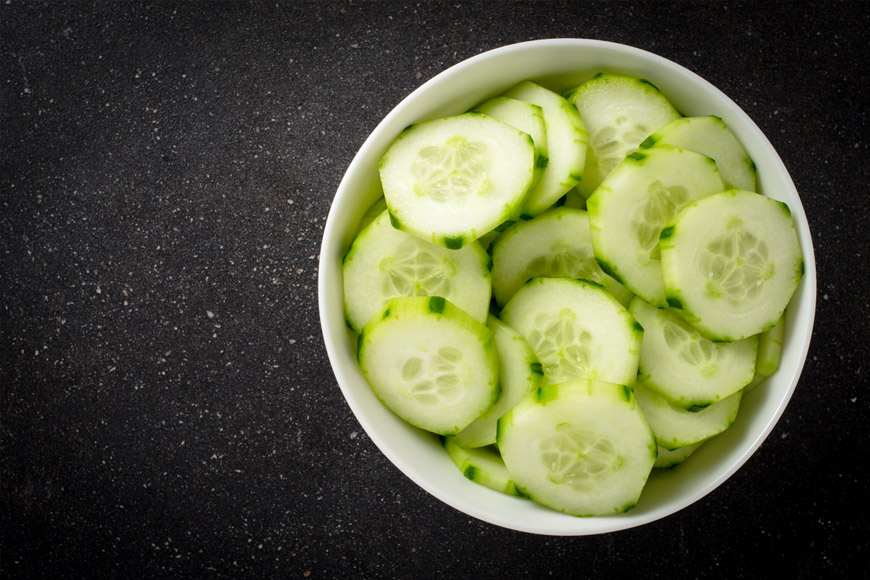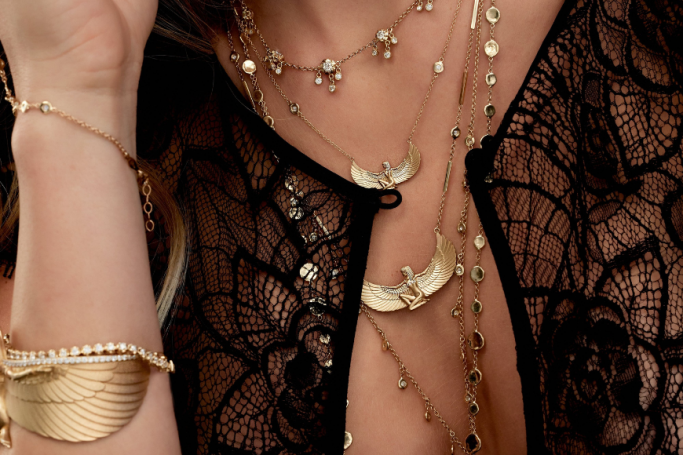It’s Khareef, or monsoon, season again in Salalah, Oman
8 August 2019
| Last updated on 8 August 2019Shaly Pereira is a freelance writer, blogger and passionate traveler based in Oman and loves to share her adventures in and around the country...
As the tantalizing aroma of pure Frankiscence wafts around my house...
I’m drawn inexplicably to the box of Omani halwa that beckons from my kitchen counter. Ignoring the warning from my brain, I spoon some into my mouth. As the richness of the wheat and nuts melts into my consciousness I’m transported back to Salalah and hey presto, it’s Khareef all over again.
After living three decades in Oman, I finally found the vigor to drag my mortified self to the Khareef Festival in Salalah last week. This jaw-dropping negligence could be attributed to the 45-degree heat in Muscat city which more or less makes it difficult to get away from an air-conditioned room. However, visions of a Kashmir type landscape with overhanging mist are hard to resist so a group of us booked tickets on Salam Air and traveled to Salalah getting a head start on the crowds.
Salalah lies within the governorate of Dhofar in the Southern region and covers one-third of Oman. The Jibal Zufar or Dhofar mountains rise up to 1,500 meters and form the perfect backdrop to miles and miles of sandy beaches and level plains. The tallest mountain in the Dhofar range is the Samhan mountain which rises to a height of 2,100 meters.
As the plane dipped and swerved into a wide circle, prior to landing, we were treated to glimpses of cool green views through the windows. The air outside as we disembarked was cool and nippy and a pleasant change from the hot blast we were accustomed to while walking out of Muscat airport.

Pictured: Turkish tea at Marnif Caves
Between July to September, the desert and Dhofar mountains change their color, texture, and mood as the temperatures dip, never rising above 27 degrees Celsius. The stark plains then burst into every shade of green imaginable – a sure sign that Khareef (monsoons) have arrived. Undoubtedly, this is the best time to visit Salalah, however, if one is interested in seeing the waterfalls in full rushing splendor, then the end of August and early September would be a better time to visit.
The ocean currents are strong during this time and most beaches and scenic points on cliffs are barricaded for safety. The humidity in the air gives rise to thick fog and driving up the Dhofar mountains through this fog is a surreal experience and calls for some expertise.
Though nature-related activities are popular during Khareef, certain historical and cultural hotspots unique to the Dhofar region should not be missed. Our Omani friend Amer from Salalah made sure we made the most of the Khareef season, taking us to places which according to him ‘every traveler needs to experience.’ The people from Dhofar are known for their hospitality and it is no wonder that on one afternoon we were invited to Amer’s house for a sumptuously laid out lunch prepared to perfection by his family. As an icing on the cake, my husband even got to learn the traditional Omani dance from Amer.
Here are some fun things we did on our 2 nights 3 days stay.

Within the City Limits
It is definitely worth spending at least an hour at the Museum of the Frankincense Land and we ended up doing exactly that. The museum not only has the best collection of ancient excavated artifacts from archaeological sites, but also an impressive collection of Omani boat models dating back from 3000 BC to modern times.
A Frankincense tree grows in its inner courtyard and a plethora of information about Salalah’s Frankinscence history is found within the museum walls. On the same premises is the Al Baleed Archaeological Site, a UNESCO world heritage site dating back to the 12th century. Marco Polo and Ibn Batuta were famed ancient travelers who frequented Al Baleed in ages past, which is a good enough reason for anyone to visit.
On the same day, we drove past the impressive Al Hosn Palace and Al Husn Souq where, because of the development of an intended waterfront property, most of the shops have been closed down with only the Frankincense bazaar in operation. However, Haffa Beach (a white sandy beach with coconut trees) lies just opposite.
This is also where you will find a long row of fruit huts selling Coconuts, Sugarcane, Bananas, Pomegranates, Papayas, Almond fruits, and Chikoos. Do not miss the experience of sipping tender coconut water here. Incidentally, we found rows of similar fruit huts all over Salalah. A Khareef thing definitely.

Pictured: Museum of the Frankincense Land
Later we stopped at Prophet Umrah’s Tomb which is a revered place for Muslims and lies right in the middle of town. Prophet Umrah is supposedly also the father of Mary, the mother of Jesus. There is, however, little to no information on the Prophet for tourists to read. Close to this place is a small building that houses the Footprints of Prophet Saleh’s Camel. The story goes that the people of Talmud to whom he prophesized asked God for a miracle to prove that Saleh was indeed a prophet. In response God gave the people a camel as a gift, thus proving Saleh’s authenticity.
On a different day, we did a leisurely walk through the Salalah Gardens Mall which is the biggest mall in Salalah. A mall visit though is not a must-do when you’re in Salalah and can be easily replaced with an outdoorsy activity.
We also reserved one evening for the Tourism Festival Salalah which is planned and overseen by the Dhofar municipality. It takes place from 15 July to 31 August and is part of the Khareef season every year. Located on Ittin Road, the cultural fete begins in the evening each day and continues throughout the night drawing large crowds from Oman and the neighboring Gulf states. The atmosphere is festive with shows and fireworks every day. True to Arab hospitality, food is a big part of the festival. Some popular delicacies to try are the Shawarmas, Mishkaks, and Kebabs.
Outside the City Limits
Anti Gravity Point (55 mins from Salalah city)
Drive via route 40 to reach the Anti Gravity Point. Shift your car gear to neutral and then watch in awe as your car moves uphill on its own. The mystery behind this feat is actually an optical illusion formed by nature. Because of the unique positioning of the hills around this point, the human eye visualizes the downhill road as being uphill. Whatever the scientific explanation, it is an amazing experience to watch your car driving itself and picking up speed on neutral gear. If you’ve left the driving seat to watch this feat, make sure your car doesn’t drive off without you.
Mirbat Seaport (12 mins from Anti Gravity Point)
Mirbat was historically known for its trade in horses and Frankincense. The town has a fishing village, old fort, and castle and takes about an hour to drive from Salalah city. We reached the port in time to see some fresh catch of the day being hauled to shore by local fishermen. The deep-sea fishing is done in Dhows. The fish is then transferred to smaller fishing boats and brought to the port. Sometimes the fishermen are away at sea for a couple of days, but if the daily catch is big enough, they return back to port the same evening. Small restaurants around this area offer their most popular fare – you guessed it – fish! Mirbat is also popular for Abalon, a shellfish that is considered a unique seafood delicacy around the world.
Ayn Sahalnaiot (20 mins from Salalah city)
This route took us to one of Salalah’s most beautiful wadis. The first stretch is a drive through mountains on a winding but scenic route. The wadi itself is surrounded by rugged limestone cliffs which are clearly reflected in the crystal clear water. Need to take that mirror reflection photo? Then this is the spot.

Pictured: Ayn Sahalnaiot
Zeek (40 mins via Thumrait st. route 31)
A further 40 minutes drive and we began our ascent up to Zeek, looping around the Jebel (mountain) for some amazing views. As the first couple of rain showers had already fallen over Salalah, the plains had turned velvety green everywhere. Under the shade of every single tree was a picnicking family and try as we might we didn’t manage to find a spot for ourselves. The views however compensated amply.
Ayn Razat (25 mins from Salalah city)
Ayn Razat is famous for its lotus pond and natural caves one of which can be accessed via a short flight of steps. A reservoir of clear spring water with fish swimming in it completes the picture and of course, there’s those jagged cliffs that lend a touch of mystery to an otherwise peaceful vista.

Pictured: Ayn Razat
Wadi Dirbat (One hour drive from town)
This wadi is found in the Jebel Samhan plateau and is easily the most visited place during Khareef season. At first, we drove through stark landscape, our eyes searching for the famed green valleys of Dirbat we had heard so much about. Some of us wondered if the few rain showers of mid – July had been enough to turn the valley into a green paradise. But as we steadily climbed upwards, our fears were put to rest and we gasped in wonder as the landscape began to display the most beautiful shades of green. We were now driving through the mist and as we rolled down the windows we could see the visiting multitudes camping on the grass and enjoying the weather. In fact, this was the most crowded place we had seen in Salalah so far. It was also the most beautiful with seasonal waterfalls and natural lakes. On one of the lakes, tourists were practicing their boating skills on kayaks and paddle boats. The main road is lined with food stalls and the aroma of kebabs roasting on open fires attracts every visitor. Famished, we gorged on freshly made ‘Fateer’ oozing with melted cheese and washed it down with hot cardamom tea, the perfect complement to the nippy weather.
Prophet Ayub’s (Job) tomb (30 mins drive from town)
Prophet Ayub is also known as Job in the Bible, which means this place has religious connotations for both Muslims and Christians. At first sight, the site of the tomb itself and the surrounding area where Prophet Ayub prayed, seems to be a bit derelict, but then you come to the realization that the futility of death needs no fancy trappings. Even for those who are non-religious, this place is worth visiting as the drive through the Ittin mountains to get here is in itself an experience. We had to slow down a couple of times to allow hordes of camels to cross the road. It was amusing to see how curiously they eyed us as they leisurely ambled across.

Pictured: Wadi Darbat

Pictured: Natural lake at Wadi Darbat
Mughsayl beach, Marneef caves, and blowholes (30 mins drive from town)
Easily one of the most visited beaches in Salalah, the Mughsayl beach has a shoreline extending up to six uninterrupted kilometers. The beach then gives way to rocky cliffs while the sea rages on crashing against the cliffs as if objecting to being barricaded. The opening in these cliffs have formed natural blowholes for the water to come gushing up sometimes rising up to 50 ft in height. The dramatic landscape makes for some great photo-ops.
Raysut Port View (20 mins from Mughsayl beach)
Raysut port is an important lifeline for all shipping related activities in the surrounding region. We drove up a more or less secluded road to get to a viewpoint past the port. It was windy and the oceans seemed to be in a constant state of fury as the waves crashed against the rocks. We were the only visitors there and since this was our last visit before taking off for the airport, it became the perfect place to come together for a group picture before saying goodbye to Salalah.
What will remain with us (apart from the Franinscence and halwa) are beautiful memories of mist-covered mountains, gently flowing wadis, emerald green grasslands and of course the generous hospitality of the Dhofari people of Oman.

Pictured: Mughsayl Beach
How to get to Salalah
Driving from Muscat – 1,015 km (9 hrs 45 minutes) via route 31
Flight from Muscat – 1 hr. 30 minutes
While Salam Air and Oman Air fly to Salalah from Muscat, there are many other airlines (Fly Dubai, Qatar Airways, Emirates, Air Arabia) flying from the other Gulf states for the convenience of visitors from UAE, Qatar, Bahrain, and Saudi Arabia.

Pictured: Fishing dhows at Mirbat
Accommodation in Salalah
5-star hotels include the Crowne Plaza, Al Baleed Resort by Anantara, Hilton Salalah among others.
Apart from these, there are many 4 star/ 3 star hotels to cater to a more modest budget. Many people, however, prefer to stay in homestays and private villas which are for hire round the Khareef season. Some of them are listed on booking.com and TripAdvisor.
Book a holiday package here inclusive of your hotel stay, round trip flights, and exciting activities starting from AED 2,385.
Fun fact - Halaniyat Islands, home to the rare Arabian leopard lies in the Dhofar governorate.
All written work and photos are contributed.
About the writer
Shaly Pereira is a freelance writer, blogger and passionate traveler based in Oman. She has been published on Oman Today, SacParent, Fiftiness, Afineparent.com, Parentco, Epicure & Culture, SheKnows, My Itchy Travel Feet, Sonderers Travel Magazine and in an Anthology up for sale on Amazon. She has also written travel guides for hotels on travel destinations. She blogs about her travels and social issues on traveltoes85.wordpress.com. You can also find her @traveltoes85 on Twitter, Facebook, and Instagram.


















































_2.jpg?itok=XEABuHuU)

















































_2.jpg?itok=j80YWwf-)


















